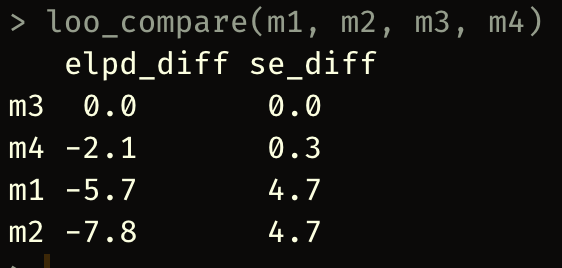
RT @rubenarslan
@AaronCharlton Can I see the distribution from Kahnemann and Deaton (Gallup Health Well Being Index) anywhere? Not reported afaict. Website is down http://wellbeingindex.sharecare.com/
RT @rubenarslan
@AaronCharlton Also, I have to induce an artificial ceiling effect of at least the scale midpoint (50) to see the line flatten. Look at that distribution.
RT @rubenarslan
@AaronCharlton I'm a simple man, I see someone claiming that they found just the right quantile regression after lots of tinkering, I run a LOO comparison between a location scale model with and without the moderator.
why can someone who is heartbroken at an income of 10k buy an ice cream cone and be happier, but someone with an income of 110k just cannot alleviate his heartbreak with ice cream and a nice spa visit
> This income threshold may represent the point beyond which the miseries that remain are not alleviated by high income. Heartbreak, bereavement, and clinical depression may be examples
except happiness is normally distributed and subject to many additive effects
It couldn't be that Kahnemann made a beginner's mistake and interpreted a ceiling effect in his outcome as a moderator. No, "conventional practice" dictated labelling the outcome variable happiness, rather than unhappiness.
Tenure is one hell of a drug.
https://www.pnas.org/doi/10.1073/pnas.2208661120
correction: I misread the part about a larger effect in arts/music/literature. afaict, they didn't test that and I wished too hard that they did. effect sizes make more sense now.
thanks @Scientific_Bird
thanks to @TaymAlsalti for a potential explanation
https://youtu.be/10Jp5SiBezQ
though I had to update on one thing: I thought the effect would be bigger for girls, because of some not-so-fond memories of male teachers at my high school. not the case here.
I thought there would be an effect, but the effect size surprised me! It's half as large as the IQ effect and if you compare the least to most attractive, the differences beat sex, migration background and parental education (yeah Table 2 fallacy, I know I know).
A lunch discussion on beauty premiums in school led me to dig this up. As I read it, one SD (.72) in attractiveness is associated with a .4 increase in grade point (from 6 to 1) in math exams and 1.3 points in arts/music/literature. 10 and 15 year olds.
https://www.degruyter.com/document/doi/10.1515/zfsoz-2012-0206/html
RT @AlexTISYoung
A subtle point that this paper makes concrete is that confounding in the GWAS used to make a PGS complicates the interpretation of within-family estimates of PGS associations across traits: i.e., just because PGS of trait 1 predicts trait 2 within-family, that doesn't imply… https://twitter.com/i/web/status/1630380670311874561
- Website
- https://rubenarslan.github.io
- The 100% CI
- http://the100.ci
- Formr.org
- https://formr.org
- https://twitter.com/rubenarslan
Bayescurious evidence enthusiast http://the100.ci
Topics: evolution, ovulation, mutation, intelligence, personality, sexuality, R, open science & source tools.










